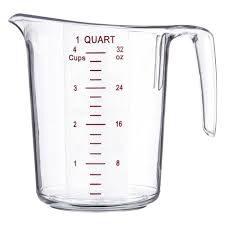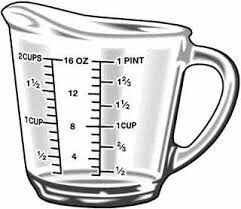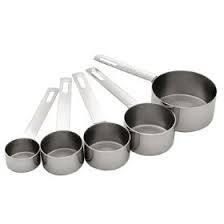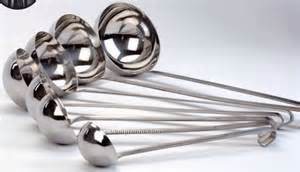Portion Control Inservice Training
What is Portion Control?
Portion control means getting the right number of servings from a recipe and serving the right amount to our consumers. Portion control requires following the standardized recipes and menus exactly.
What does it involve?
- Reading the menus and recipes carefully
- Purchasing an adequate amount of food
- Preparing, storing, and serving food correctly
Why is portion control important?
1) To provides the correct serving size to meet the nutritional needs of consumers and the U.S. Department of Agriculture (USDA) Meal Pattern requirements.
2) To help control costs.
3) To helps minimize waste.
4) To helps to guide the ordering and preparation of food.
5) To give a consistent yield and portion size.
6) Consumers know exactly how much food to expect.
7) Consumers get the correct portion size.
Incorrect Portions could result in:
- Consumer dissatisfaction
- Leftovers
- Food waste
- Meals that do not meet the USDA’s Meal Pattern requirements for a reimbursable meal
- Meals that do not meet the USDA’s Meal Pattern requirements for a reimbursable meal
Tips for controlling portions:
1. Follow the recipes accurately when measuring and weighing ingredients, combining ingredients and cooking the product if it requires cooking.
2. Be serve the staff knows the planned portion size for each menu item.
3. Have the correct measuring devices available for staff to use.
4. Use the correct type and the correct size portion control tool for each food item.
Measuring and Weighing Devices
There are many measuring and weighing instruments used in food service. They include an assortment of cups, spoons, ladles, dipper and scoops. Scales are also sometimes used and may include baker’s balance scales, digital platform scales or portion scales. Liquid measuring spoons, pints, quarts and gallons are used as a substitute instead of weighing liquid measures.

Use this when measuring larger amounts of liquids.

Use this when measuring dry ingredients. The cups come in different sizes. (1 cup, ½ cup, 1/3 cup, ¼ cup, 1/8 cup)


Use this when measuring liquid or dry ingredients in smaller amounts. They come in different sizes. (tablespoon, teaspoon, ½ teaspoon, ¼ teaspoon, 1/8 teaspoon)
Portion Size Key
Approximate Measurements
SCOOPS
| Size/No. | Level Measure |
|---|---|
| 6 | 2/3 cup |
| 8 | ½ cup |
| 10 | 3/8 cup |
| 12 | 1/3 cup |
| 16 | ¼ cup |
| 20 | 3 1/3 Tbsp. |
| 24 | 2 2/3 Tbsp. |
| 30 | 2 Tbsp. |
| 40 | 3 ¾ Tbsp. |
| 50 | 3 ¼ tsp. |
| 60 | 3 ¼ tsp. |
| 70 | 2 ¾ tsp. |
| 100 | 2 tsp. |
Scoops are left or right hand or squeeze type that can be used for both hands. Number on the scoop indicates how many level scoop- full make one quart. For example, eight No. 8 scoops = 1 quart.

| Cups | Ounces |
|---|---|
| 1/8 cup | 1 |
| ¼ cup | 2 |
| 3/8 cup | 3 |
| 1/2 cup | 4 |
| ¾ cup | 6 |
| 1 cup | 8 |
| 1 ½ cup | 12 |
Ladles and portion servers (measuring-serving spoons that are volume-standardized) are labeled “oz.” “Fl oz” would be more accurate since they measure volume, not weight.
Use ladles for serving soups, stews, creamed dishes, sauces, gravies, and other liquid products.
Use portion servers (solid or perforated) for portioning solids and semi-solids such as fruits and vegetables, and condiments.

Slotted Spoons
Spoons vary in length (11″, 13″, 15″, 18″, 21″) for ease of use in cooking or serving. Spoons can have plastic handles that are heat-resistant. Level scoops, ladles, and portion servers provide more accurate portion control than serving spoons that are not volume-standardized measure.

Common Portion Sizes
Breakfast
Fruit Juice =1/2 cup= 4 oz.
Dry Cereal = ¾ cup
Cooked Cereal = ½ cup = 4 oz. ladle
Scrambled Egg = ¼ cup = #16 scoop
Peanut Butter or Pancake syrup 2 Tbsp= # 30 scoop = 1/8 cup
Lunch
Meat or Meat. Sub. 2 oz. or for Chopped, Ground or Puree with broth/sauce 1/3 cup = #12 scoop
Dinner
Meat or Meat. Sub. 3 oz. or for Chopped, Ground or Puree with broth/sauce 1/2 cup = #8 scoop
Fresh or Canned Fruit: ½ cup = # 8 scoop
Cooked Vegetables: ½ cup = # 8 scoop
Raw Vegetables: 1 cup = # 8 scoop.
Milk: 1 cup = 8 oz.
Volume Equivalents for Liquids
